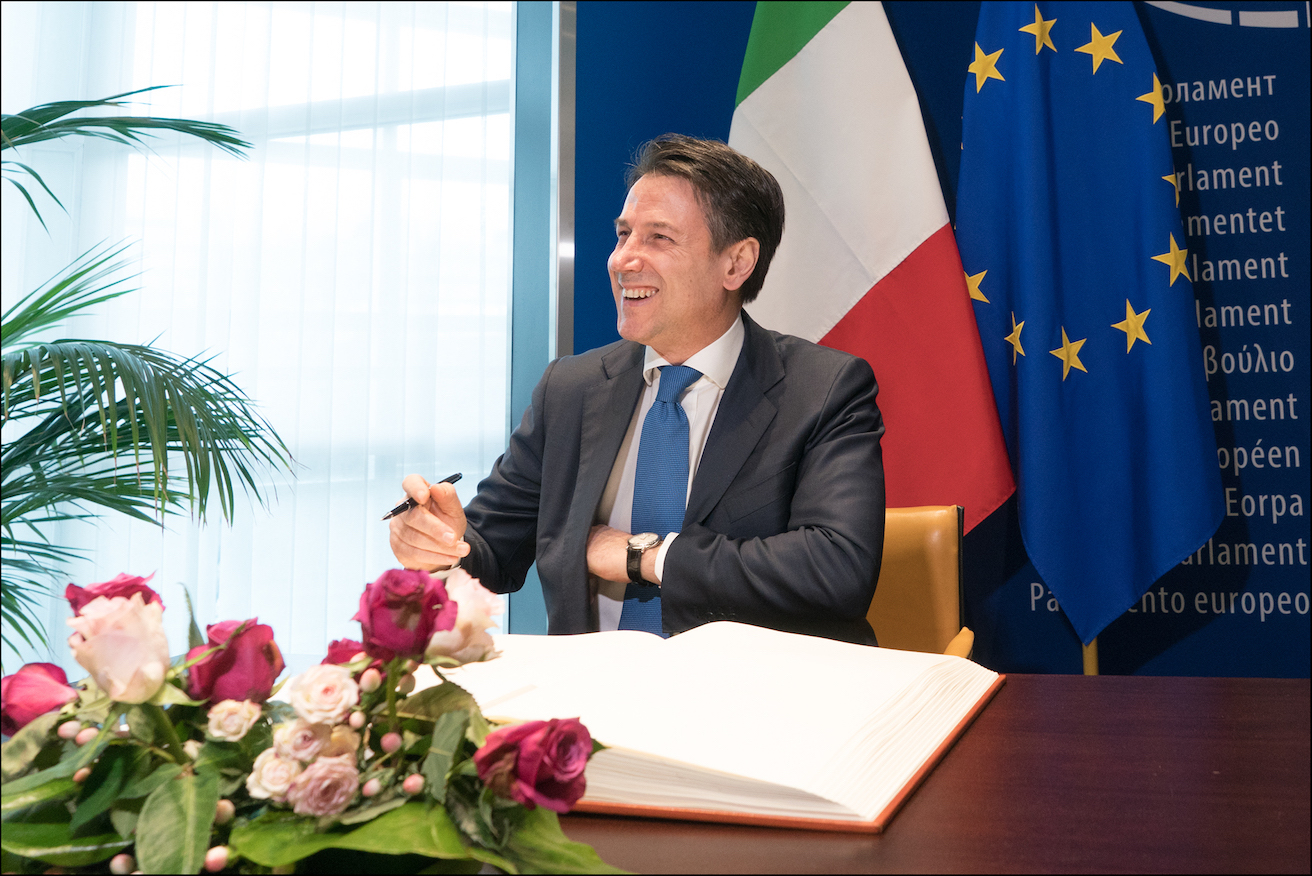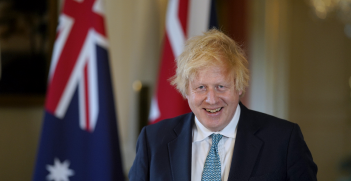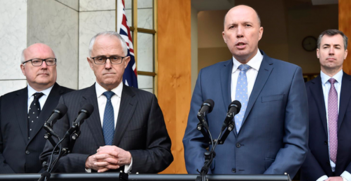New Government Takes Italy Back to the Future

Giuseppe Conte’s wrecking of the populist pact and reappointment as the 5 Star Movement’s prime minister paints him as a poster child for “Christian Democracy 2.0” in his government.
On August 29 Italy’s Prime Minister Giuseppe Conte received the formal mandate to form a government with the supposedly anti-establishment 5 Star Movement (5SM) and the centre-left Democratic Party, plus a small group of leftist and regional independents. This is quite a U-turn for Italian politics. In a matter of weeks the far right wing League and its populist leader, Matteo Salvini were pushed back into opposition possibly until the next poll in 2023. Even more extraordinary is Giuseppe Conte’s confirmation as PM. His government promises to be a rather different from the one that ruthlessly closed the Italian ports to boat people, broke many European Union parameters and cosied up to Russia and China.
To give Australian readers a sense of this remarkable turnaround, it’s as if last year Malcom Turnbull were reappointed to form government with the Labor Party and the Greens instead of giving up the prime ministership to Scott Morrison under the Coalition.
In little over a year Giuseppe Conte, previously an obscure law professor at the University of Florence, has evolved from being the 5SM’s useful idiot in the internationally reviled coalition with the League to being supported in his quest to stay at the helm of Italy by all the EU heavyweights and G7 attendants in Biarritz. Most ironically, even Donald Trump effusively tweeted his personal praise to Conte for ditching the most powerful right-wing populist in Europe. Furthermore, the Italian stocks are bullish in anticipation of Conte’s new government and the infamous spread of Italian and German bonds are shrinking to historical lows. This is truly remarkable, as we won’t find many government leaders who are capable of garnering the open support of Trump, Merkel, Macron, the EU Commission and the financial markets all at the same time.
Despite his political virginity, in his first year as prime minister until mid-2019, Conte certainly proved useful, but not the idiot he was meant to be. Actually quite the opposite, as Conte had been gradually carving a power base among the moderates in the 5 Star Movement, as well as the realists in the public service, EU institutions and Vatican circles. Conte’s painstaking work of attrition in all corners of Italian and European politics eventually hit the wall in Matteo Salvini’s ructious mismanagement of the Interior Ministry and open attempts to usurp the PM’s prerogatives — rather like Peter Dutton was successful in undermining Malcom Turnbull. The day of reckoning came in the aftermath of Salvini’s triumph in the European Parliament election last May, when the League doubled their votes to a staggering 34 percent and the 5SM halved to 17 percent, essentially swapping positions from the Italian poll the year before.
However, Salvini showed all his strategic limits first when he inexplicably dithered in office for three months after the European vote and then when he abruptly withdrew the League’s confidence in Conte’s government whilst literally partying on the beach. Salvini oddly made his belated move for no appropriate reason while the Parliament was in summer recess in the mistaken belief that he would obtain snap elections despite impending budget deadlines. Instead, Conte handsomely rose to the task and called back the Parliament on August 20, when most of Italy is shut down for holiday, to make a scathing speech in which he trashed Salvini’s opportunistic behaviour and lack of institutional literacy.
Salvini’s inarticulate response was widely ridiculed in the media and criticised even among his typically monolithic supporter base. Conte’s rebuke of Salvini proved highly popular and the opinion polls soon showed the League in freefall for the first time in years. This had two important implications. One is that Conte has essentially become the adult in charge and quite possibly the long term political leader of the 5SM, as even its co-founder, comedian Beppe Grillo came back from self-imposed rearguard and endorsed Conte’s newfound leadership.
Secondly, Conte gained momentum to strike a deal between the 5SM and the Democratic Party, after two failed attempts in 2013 and 2018. This is truly historical, as Beppe Grillo decided to found the 5SM in 2009 after the Democratic Party refused to endorse his unorthodox online campaigns for the protection of the environment and consumer rights. Then it was Grillo’s turn to shunt the Democratic Party in 2013, when the 5SM refused to form government and pushed the Democratic Party into a controversial alliance with Silvio Berlusconi. Despite collapsing in the 2018 poll, the Democratic Party under former PM Matteo Renzi stubbornly refused the advances of the 5 Star Movement, thus opening the gates of power to Salvini’s League. Nobody really thought that the “Government of Change,” — the 5SM and the League pompously called it could last very long — as instead many feared or hoped that it was just the dawn of Italy’s populist revolution.
Alas, here we are talking about the 66th change of government in Italy since 1946. However, things are taking an unexpected turn. Last year, the conventional wisdom was that either the supposedly anti-establishment 5SM or the populist League would soon prevail over or absorb their provisional partner to take full power on their own right in view of steering Italy out of the Euro-atlantic track. Until a few weeks ago, Salvini’s League seemed the sure winner of this kind of Ribbentrop-Molotov pact. But surprisingly a political outsider like Conte put a spanner in the populist works and is now poised to escort the 5SM into the fold of the Euro-atlantic establishment.
Conte’s ascendancy confirms that the 5SM follows the historical curve of the Italian ‘anti-establishment’ voting, which is anything but. As discussed in my recent academic paper co-authored with Bruno Mascitelli, addressing the 5SM as anti-establishment does little to help our understanding of this most fluid political period in Italy and across Europe. The second Conte government thus confirms our conclusion that the 5SM is gradually forfeiting the antagonist frontier to keep hold of the power under conditions of deliberative and pluralist democracy. For this reason, and not only because Conte is a good friend of the Vatican, we are witnessing the gradual entrenchment of the 5SM as the natural heir of the Christian Democracy Party, which was swept away after the corruption scandals of 1992 and left a vacuum in the post-Cold War Italian politics that was exploited, but not filled by Silvio Berlusconi’s special interests. It remains to be seen whether the Democratic Party — the neoliberal reincarnation of the Communist Party — will eventually break down to splinter left and right or blend with the 5SM in the centre. After all, the 5 Star Movement’s leaders keep repeating that their social justice and civic honesty stance is post-ideological, neither left nor right. But this only means that they sit in the middle picking from left — economic and labour issues and right — cultural and moral issues, a textbook definition of “Christian Democracy.”
This as argued in my paper claims that the second Conte government will ultimately position the 5SM “as the indispensable, long-term governing partner well within and squarely across the whole constitutional arc,” thus taking up and refreshing the role that was indisputably of the Christian Democracy from 1946 to 1992. With this turn of events, there are good chances that the 5SM and Giuseppe Conte are here for the long run.
Dr Giovanni Di Lieto lectures international trade law in the Bachelor of International Business program at Monash University. His research agenda focuses on international economic law, in particular the global governance of cross-border socio-economic relations and its repercussions on the international regulation of trade and labour markets.
This article is published under a Creative Commons Licence and may be republished with attribution.





